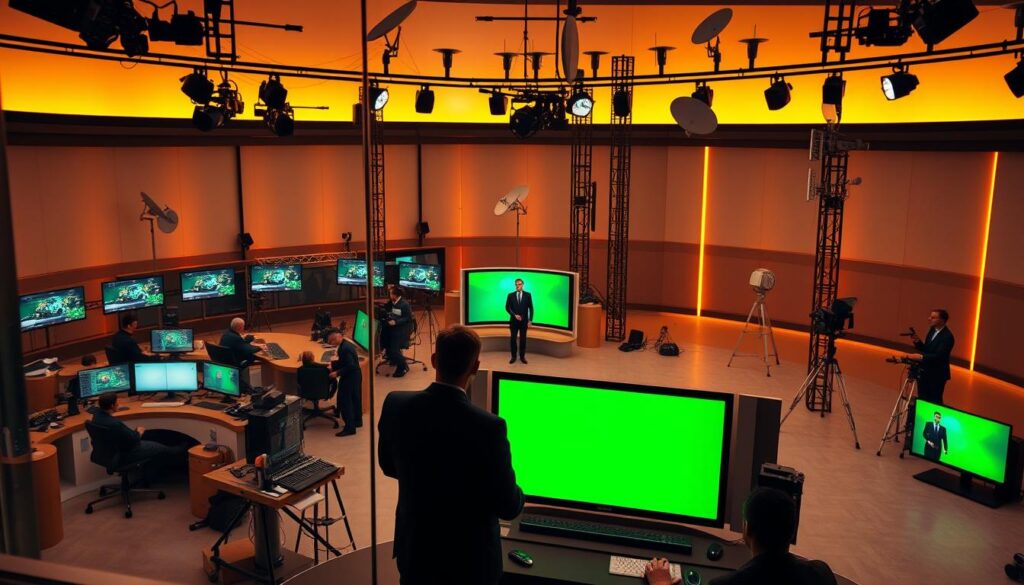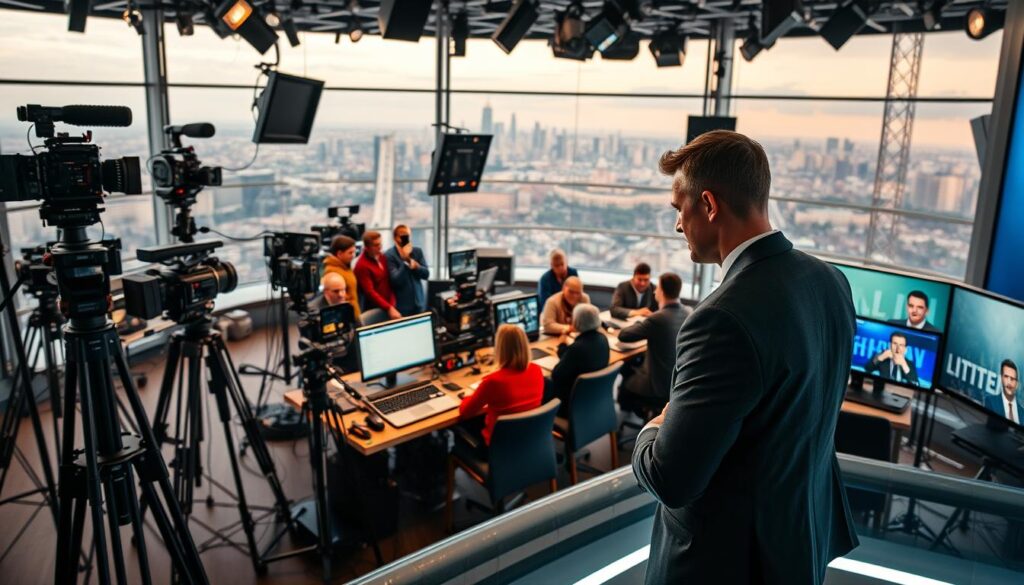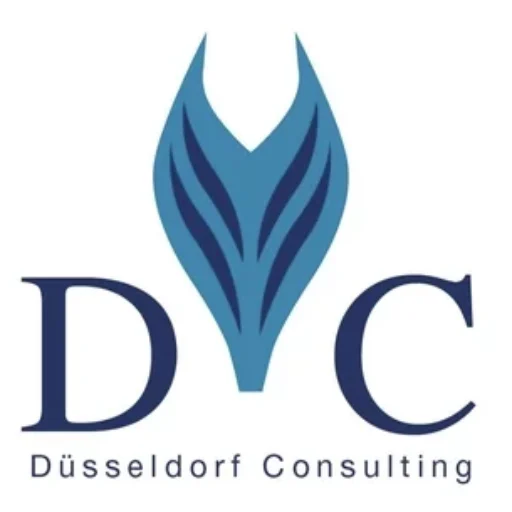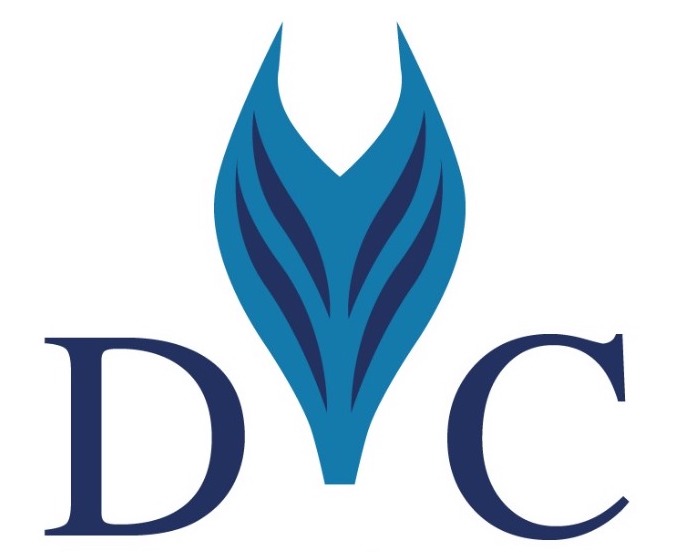Understanding the digital media landscape Germany is crucial for navigating the complexities of the broadcasting industry Germany. The report “Mapping Digital Media: Germany” provides a comprehensive overview of the current media landscape, highlighting key trends and developments.
Düsseldorf Consulting GmbH, located at Königsallee 22, 40212 Düsseldorf, embodies the principle of ACTA NON VERBA (deeds, not words), emphasizing the importance of actionable insights in the media and digital broadcasting sector.
Key Takeaways
- Understanding the digital media landscape is crucial for industry success.
- The report “Mapping Digital Media: Germany” provides valuable insights into the current media landscape.
- Düsseldorf Consulting GmbH offers expert consulting services.
- The broadcasting industry in Germany is undergoing significant changes.
- Staying informed about industry trends is essential.
Overview of Media and Digital Broadcasting in Germany
The evolution of media trends in Germany is closely linked to advancements in digital broadcasting technology. Over the years, Germany’s media landscape has transformed significantly, driven by the rise of internet TV and online streaming services.
According to the report “Mapping Digital Media: Germany,” the historical context of media in Germany has played a crucial role in shaping its current landscape. The report highlights the shift from traditional broadcasting to more personalized and on-demand content consumption.
The current state of media and digital broadcasting in Germany is characterized by a diverse range of platforms and services. Germany’s media sector has seen a significant increase in the adoption of digital technologies, leading to a more competitive and dynamic market.
| Platform | Type | Popularity |
|---|---|---|
| Traditional TV | Broadcast | High |
| Internet TV | Streaming | Growing |
| Online Streaming Services | On-Demand | Very High |
The rise of online streaming services in Germany has been particularly noteworthy, with many consumers opting for the flexibility and variety offered by these platforms. As a result, traditional broadcasting models are being reevaluated to remain relevant in a rapidly changing media environment.
Key Regulatory Bodies in Germany’s Media Sector
Germany’s media sector is overseen by several key regulatory bodies that play a crucial role in shaping the industry. These bodies are responsible for ensuring that the media landscape operates within the legal framework, maintaining a balance between public interest and commercial viability.
The primary regulatory bodies include the Federal Network Agency (Bundesnetzagentur) and the Media Authorities (Landesmedienanstalten). The Federal Network Agency is responsible for regulating telecommunications and, by extension, aspects of digital broadcasting. It oversees the allocation of frequencies and ensures compliance with technical standards.
“The regulatory framework for broadcasting and internet services in Germany is designed to promote diversity, protect consumers, and ensure fair competition.”
The Media Authorities, on the other hand, are responsible for licensing and supervising private broadcasters. They ensure that broadcast content complies with German media laws, which include provisions against hate speech, incitement to violence, and the protection of minors.
The roles of these regulatory bodies can be summarized in the following table:
| Regulatory Body | Responsibilities |
|---|---|
| Federal Network Agency | Regulates telecommunications, allocates frequencies, ensures technical compliance |
| Media Authorities | Licenses private broadcasters, supervises content compliance, protects minors |
These regulatory bodies work together to ensure that Germany’s media sector remains vibrant, diverse, and compliant with legal standards. Their efforts are crucial in maintaining a healthy media landscape that serves the public interest.
Types of Broadcast Media in Germany
Broadcast media in Germany encompasses a broad spectrum of public and private entities. The country’s media landscape is characterized by a mix of traditional broadcasting and modern digital platforms.
Germany’s public broadcasting system is primarily represented by ARD (Arbeitsgemeinschaft der öffentlich-rechtlichen Rundfunkanstalten der Bundesrepublik Deutschland) and ZDF (Zweites Deutsches Fernsehen). These public broadcasters offer a wide range of programming, including news, entertainment, and educational content. They are funded through a combination of license fees and advertising revenue.
In addition to public broadcasting, Germany has a significant private broadcasting sector. Private channels such as RTL and Sat.1 offer competitive programming, including popular TV shows and news programs. These private broadcasters rely heavily on advertising revenue.
The rise of digital technology has also led to the growth of online streaming services in Germany. Platforms like Netflix, Amazon Prime Video, and local services such as Waipu.tv are gaining popularity, offering on-demand content that caters to diverse viewer preferences.
For more detailed information on Germany’s media system, you can refer to the report “Mapping Digital Media: Germany.”
Comparison of Public and Private Broadcasting in Germany
| Criteria | Public Broadcasting | Private Broadcasting |
|---|---|---|
| Funding | License fees and advertising | Primarily advertising |
| Content | Diverse, including public service content | Mainly entertainment and news |
| Examples | ARD, ZDF | RTL, Sat.1 |
The coexistence of public and private broadcasting, along with the emergence of online streaming services, contributes to a vibrant and diverse media landscape in Germany. This diversity is a key aspect of the country’s digital media landscape, catering to a wide range of audience preferences and shaping media trends in Germany.
Digital Broadcasting Technology in Germany
Digital broadcasting technology has revolutionized the way media is consumed in Germany. The country’s broadcasting industry has seen significant advancements in digital broadcasting, enhancing the delivery of multimedia content.
The German media market has adopted various digital broadcasting technologies, including terrestrial digital broadcasting, satellite broadcasting, and cable broadcasting. Terrestrial digital broadcasting has been particularly impactful, offering high-quality digital signals over the airwaves, thus providing widespread coverage and accessibility.
One of the key technologies driving digital broadcasting in Germany is DVB-T2 (Digital Video Broadcasting – Terrestrial Second Generation). This technology has enabled the transmission of high-definition television (HDTV) signals, significantly improving picture quality and providing a more robust signal compared to its predecessor, DVB-T.
In addition to terrestrial broadcasting, satellite and cable broadcasting play crucial roles in Germany’s digital broadcasting landscape. Satellite broadcasting offers extensive coverage, including rural areas, while cable broadcasting provides high-speed internet and television services to subscribers.
Comparison of Digital Broadcasting Technologies
| Technology | Coverage | Quality |
|---|---|---|
| Terrestrial Digital Broadcasting | Wide coverage, accessible over the air | High-definition signals |
| Satellite Broadcasting | Extensive, including rural areas | High-quality signals, weather-dependent |
| Cable Broadcasting | Urban and suburban areas, dependent on infrastructure | High-speed internet and HDTV |
The adoption of these digital broadcasting technologies has transformed the German media landscape, offering consumers a range of choices for accessing multimedia content. As the broadcasting industry continues to evolve, it is likely that we will see further innovations in digital broadcasting technology, enhancing the viewer experience and expanding the reach of media services.
The Role of Public Broadcasters
In Germany, public broadcasting is a cornerstone of the country’s media and digital broadcasting industry. Public broadcasters, such as ARD and ZDF, play a vital role in providing high-quality programming to the German public.
The funding model for public broadcasters in Germany is primarily based on a license fee system, where households pay a mandatory fee to support public broadcasting services. This model allows public broadcasters to maintain their independence from commercial interests and focus on delivering content that serves the public interest.
According to the report “Mapping Digital Media: Germany,” public broadcasters have been adapting to the changing media landscape by investing in digital technologies and expanding their online presence. This shift has enabled them to reach a wider audience and remain relevant in the digital age.
The impact of public broadcasters on Germany’s media landscape is significant. They not only provide a wide range of programming, including news, entertainment, and educational content, but also contribute to the country’s cultural and social fabric. By offering diverse perspectives and promoting cultural exchange, public broadcasters help to foster a well-informed and engaged citizenry.
Moreover, public broadcasters in Germany are committed to maintaining high standards of journalism and programming quality. They are subject to rigorous regulatory oversight, ensuring that their content meets the needs and expectations of the public.
In conclusion, public broadcasters are essential to Germany’s media ecosystem, providing valuable services that benefit the public. As the media landscape continues to evolve, it is likely that public broadcasters will remain a vital component of Germany’s broadcasting industry.
Private Broadcasting in Germany
The landscape of private broadcasting in Germany is marked by major networks that have established themselves through innovative programming and strategic advertising models. Private broadcasting in Germany has evolved significantly over the years, offering a diverse range of content to audiences.
Major Private Networks
Some of the key players in Germany’s private broadcasting sector include RTL Group, ProSiebenSat.1 Media, and Sky Deutschland. These networks offer a variety of channels catering to different demographics and interests.
Advertising Revenue Models
Private broadcasting networks in Germany primarily generate revenue through advertising. The advertising models employed by these networks are strategic and often tailored to the specific audience demographics of their channels.
| Network | Primary Channels | Advertising Revenue Model |
|---|---|---|
| RTL Group | RTL, RTL II, VOX | Targeted advertising based on audience demographics |
| ProSiebenSat.1 Media | ProSieben, Sat.1, Kabel eins | Multi-platform advertising including TV, digital, and social media |
| Sky Deutschland | Sky Sport, Sky Cinema | Subscription-based model with targeted advertising |

The private broadcasting sector in Germany is vibrant and competitive, with major networks employing innovative strategies to attract audiences and advertisers. As the media landscape continues to evolve, these networks are likely to adapt and thrive.
Streaming Services and On-Demand Content
Streaming services are redefining the media and digital broadcasting landscape in Germany, offering users unprecedented choices.
The report “Mapping Digital Media: Germany” highlights the significant growth of streaming services and on-demand content, indicating a substantial shift in how Germans consume media. Platforms like Netflix, Amazon Prime Video, and Disney+ have become household names, offering a wide range of content that caters to diverse viewer preferences.
The rise of these services has led to a decline in traditional TV viewing. According to recent media trends in Germany, there’s been a notable increase in the number of people opting for online streaming services over conventional broadcasting methods.
“The way people consume media is changing rapidly, with on-demand services leading the charge,” said a media analyst. “This shift is forcing traditional broadcasters to rethink their strategies.”
The impact on the digital media landscape in Germany is profound. Streaming services are not only changing viewer habits but also influencing content creation. There’s a growing demand for high-quality, original content that can compete with international productions.
| Streaming Service | Subscribers (in millions) | Original Content Offerings |
|---|---|---|
| Netflix | 15 | High |
| Amazon Prime Video | 10 | Very High |
| Disney+ | 8 | High |
The future of media and digital broadcasting in Germany will likely be shaped by the continued growth of streaming services and on-demand content. As the media landscape evolves, it’s crucial for stakeholders to understand these trends and adapt accordingly.
Media Consumption Trends in Germany
Media consumption in Germany is experiencing a paradigm shift, with digital media gaining prominence. The report “Mapping Digital Media: Germany” highlights significant changes in how Germans consume media, driven by technological advancements and evolving viewer preferences.
The shift towards digital media is evident across various demographics. According to the report, younger audiences are more inclined towards online media, while older demographics still prefer traditional television. This dichotomy is reshaping the media landscape in Germany.
Key Trends in Media Consumption
- Increased use of streaming services
- Rise in online news consumption
- Decline in traditional TV viewing among younger audiences
- Growing importance of social media in news dissemination
The implications of these trends are significant for the broadcasting industry in Germany. As noted by a media expert, “The shift towards digital media is not just a change in viewing habits; it’s a fundamental transformation of the media ecosystem.”
“The digital revolution is redefining the way media is consumed, produced, and distributed. It’s a challenge and an opportunity for the broadcasting industry to adapt and thrive.”
| Media Platform | Usage Trend | Demographic Preference |
|---|---|---|
| Streaming Services | Increasing | Younger audiences |
| Traditional TV | Declining | Older demographics |
| Online News | Rising | Across demographics |
The German media market is responding to these trends by investing in digital infrastructure and diversifying content offerings. The broadcasting industry Germany is at a crossroads, with the need to balance traditional strengths with the demands of a rapidly changing media landscape.
As the media consumption trends continue to evolve, understanding these shifts will be crucial for stakeholders in the German media market. By adapting to these changes, the industry can navigate the challenges and capitalize on the opportunities presented by the digital age.
Challenges Facing Media and Broadcasting
Germany’s broadcasting sector faces significant hurdles, including regulatory complexities and increased competition from international streaming services. The media landscape is undergoing a substantial transformation, driven by technological advancements and changing consumer behaviors.
The broadcasting industry in Germany is subject to a complex regulatory framework that can sometimes hinder innovation and adaptation to new technologies. Regulatory bodies play a crucial role in overseeing the industry, ensuring compliance with existing laws and guidelines. However, the rapid evolution of digital media often challenges the ability of these bodies to keep pace with new developments.

One of the significant challenges is the rise of online streaming services in Germany, which have altered traditional viewing habits. Platforms such as Netflix, Amazon Prime, and Disney+ have gained substantial popularity, offering a wide range of content that caters to diverse audience preferences. This shift has intensified competition for traditional broadcasters, who must now adapt their strategies to remain relevant in a rapidly changing German media market.
The working paper “Regulation of Broadcasting and Internet Services in Germany” highlights the need for a balanced regulatory approach that fosters innovation while protecting consumer interests. It emphasizes the importance of creating a level playing field for both traditional broadcasters and new entrants in the market.
To navigate these challenges, stakeholders in the broadcasting industry in Germany must embrace digital transformation, invest in high-quality content, and explore new business models. Collaboration between industry players, regulatory bodies, and technology providers will be crucial in shaping the future of media and broadcasting in Germany.
Moreover, understanding media consumption trends is vital for broadcasters to tailor their offerings to meet the evolving demands of their audience. As the industry continues to evolve, staying abreast of these trends and adapting strategies accordingly will be key to success.
Future of Media and Digital Broadcasting in Germany
Germany’s media industry is undergoing significant transformation, driven by the evolving digital media landscape. As discussed in the report “Mapping Digital Media: Germany,” the future of media and digital broadcasting in Germany is poised for further innovation. Key trends shaping this future include the rise of multimedia content and shifting media trends in Germany.
The demand for personalized and interactive content is on the rise, influencing the digital media landscape in Germany. Companies like Düsseldorf Consulting GmbH are at the forefront of this change, leveraging digital transformation to create more engaging media experiences. For more insights on the media industry in Germany, you can explore the detailed analysis on Duscons.
As Germany’s media landscape continues to evolve, it is clear that digital broadcasting and multimedia content will play a pivotal role in shaping the industry’s future. Staying abreast of media trends Germany will be crucial for stakeholders looking to navigate this changing landscape.



